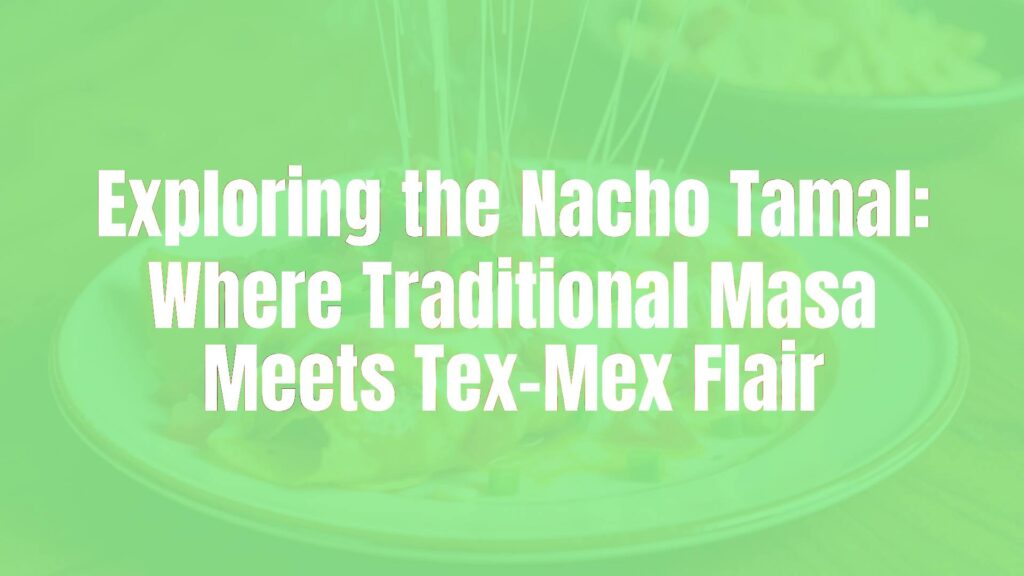The Nacho Tamal: A Contemporary Twist on Classic Comfort
The nacho tamal is a recent culinary innovation that blends the timeless tradition of tamales with the bold and playful flavors of Tex-Mex nachos. While firmly rooted in the foundational technique of steaming masa dough, the nacho tamal departs from the classic by introducing spicy, cheesy, and vibrant elements inspired by the beloved snack found at sporting events, parties, and casual eateries across the United States and Mexico.
Key Traits and Signature Flavors
Distinguished by its eye-catching appearance and indulgent profile, the nacho tamal typically features a masa base laced with mild spices such as cumin and chili powder. The filling often combines seasoned ground beef or shredded chicken, smooth melted cheese (like cheddar or Monterey Jack), jalapeño slices, and sometimes black beans or corn. After steaming to perfection, the tamal may be garnished with colorful toppings reminiscent of classic nachos—think diced tomatoes, avocado, a drizzle of crema, and extra cheese.
Background: Evolution and Regional Popularity
The nacho tamal emerged in urban kitchens and festival food stalls during the late 20th and early 21st centuries, reflecting a larger trend of fusion cooking. By merging the corn masa foundation and technique of Mexican tamales with the now-iconic components of nachos (which originated in Northern Mexico but found lasting fame in American Tex-Mex cuisine), this dish symbolizes culinary adaptation and playful creativity. While it is not a traditional regional staple, the nacho tamal is especially popular in border regions and foodie hubs where experimentation is celebrated.
Essential Ingredients and Texture
The core of a nacho tamal remains the familiar steamed masa, but the dough is sometimes enhanced with a hint of chili or cheese. Fillings are typically robust and savory, with ground meat or poultry cooked in a tomato-chili sauce, then mixed with plenty of melting cheese. Jalapeños or even pickled peppers provide gentle heat, while black olives or pinto beans can add earthiness. The resulting tamal is soft, moist, and slightly spicy, featuring a gooey cheese pull and layered flavors in every bite.
Possible Variations and Substitutions
Nacho tamales are endlessly adaptable. Vegetarian versions replace meat with seasoned beans or grilled vegetables, while vegan takes might use plant-based cheeses and jackfruit. The heat level can be tailored with milder poblanos or spicy serranos in place of jalapeños. Cheese-lovers might experiment with blends, incorporating everything from creamy queso fresco to sharp pepper jack. Even masa itself can be colored with pureed peppers for visual flair.
Serving Style and Pairings
To best enjoy a nacho tamal, serve it fresh and warm, topped with classic nacho garnishes: dollops of sour cream, spoonfuls of pico de gallo, sliced black olives, and sprigs of cilantro. For extra crunch, some even add crushed tortilla chips on top just before serving. The tamal pairs well with icy Mexican lagers, tangy lime aguas frescas, or crisp coleslaw to balance its richness. For a complete meal, combine with spiced rice, refried beans, or a fresh corn salad.
Cultural Significance and Culinary Identity
While the nacho tamal is a modern invention rather than a time-honored classic, it exemplifies the spirit of contemporary Mexican and Mexican-American gastronomy: inventive, inclusive, and always evolving. It offers a delicious point of entry for those new to tamales and a fun surprise for seasoned enthusiasts eager to experience masa in a whole new, cheesy, and crave-worthy format.

